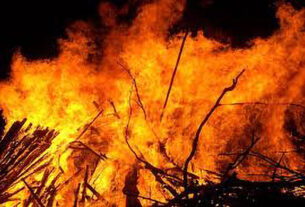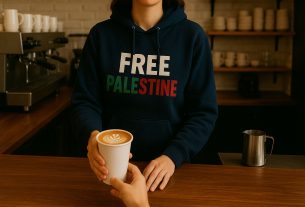I’m a collector of old knick knacks, as I suppose many Jews are. We collect stories, memories, and practices, but also family heirlooms: Shabbat candlesticks, old menorahs, seder plates, kippot from bar mitzvah celebrations across our lifetimes.
Prized among my collected memorabilia is a Hanukkah menorah that my great-grandparents brought with them from the old country. It is made of silver and has a straight back that features engravings of palm trees and lions (of Judah, presumably). There’s a large crown on top and a hook on the side that holds a little dove on a swinging ring. In front, there’s a row of tiny silver jars, suitable for filling with olive oil and wicks, and another silver jar perched on the top right, which can be detached and used as the shamash to light the other wicks.
That old Hanukkiah is a physical reminder of our continuity, of the dislocations and wanderings of Jewish history and the consolations that come with the knowledge that our rituals (and ritual items) persevere. That my great-grandparents thought to schlep that precious artifact with them when they fled to a new country speaks volumes about how essential their Jewish identity was to them. That I inherited it speaks to how core that same identity has been for their descendants — and for me.
Each evening of Hanukkah, standing before the pure white glow of these olive-oil flames, I bask in the warmth of their courage. We are connected by a determination that these old lights should be kindled anew, that their brilliance and warmth should not slip into oblivion as an ancient memory, and that lighting them has a healing power able to resist the darkness today.
Jews have been lighting these lights continuously for the past 2,300 years. But that is merely middle-aged by Jewish standards. This Friday night, as Shabbat begins, we will light two sets of lights: First, the radiant colors of the Hanukkiah and then the sweet white candles of Shabbat. And with that second set of flames, we slip back in time another 1,000 years. It may well be that kindling Shabbat lights is the world’s oldest continuously practiced ritual. It was ancient even in the time of the Maccabees.
It turns out that the silver Hanukkah menorah was not my only inheritance from my great-grandparents. Once they were safely in Brooklyn, and after they managed to achieve some financial success, they bought two beautiful silver candlesticks, on which they engraved a florid “A” (their last name was Aptheker) at the base of each. So this Friday, I will light my Hanukkah candles with their old world menorah, and then my Shabbat candles with their new world candlesticks. Old and new are contained in today’s light. Warm memories of Hanukkahs past are ignited by the sight of today’s candles.
And those lights also reflect ancestral courage. The Hanukkah menorah symbolizes the determination of an ancient family (the Maccabees) to assert Jewish life in the face of monumental power. When we light those candles, we connect backward through an unbroken link of Jews determined to live and to thrive as Jews, and to shine Jewish wisdom and observance in a world that idolizes wealth, force, and fame. The Shabbat candles, Jewish tradition teaches, are kindled in memory of the Exodus and the creation of the world. When we light them, we transport ourselves even further back in time, burrowing deep into a primal sense of meaning that sees life as a journey from enslavement to freedom and as a celebration of a universe always in the process of becoming.
As we go from Hanukkah to Shabbat, we move from the very old to the positively ancient. And in that transition, we affirm that the assertion of religious freedom and Jewish self-determination that is Hanukkah is rooted in, and an expression of, the deeper roots of liberation, return and creation.
We stand with those who have come before us in a solidarity that links our generations in an unbroken resilience that must be continuously renewed. In the ephemeral and sporadic illumination of light, we reenact the transmission of Torah, of wisdom, and of ritual that has generated and expressed our shared commitment to live as Jews — free, diverse and beautiful, in whatever world we find ourselves.
This article initially appeared in My Jewish Learning’s Shabbat newsletter Recharge on Dec. 24, 2022. To sign up to receive Recharge each week in your inbox, click here.
The post Hanukkah and Shabbat appeared first on My Jewish Learning.




